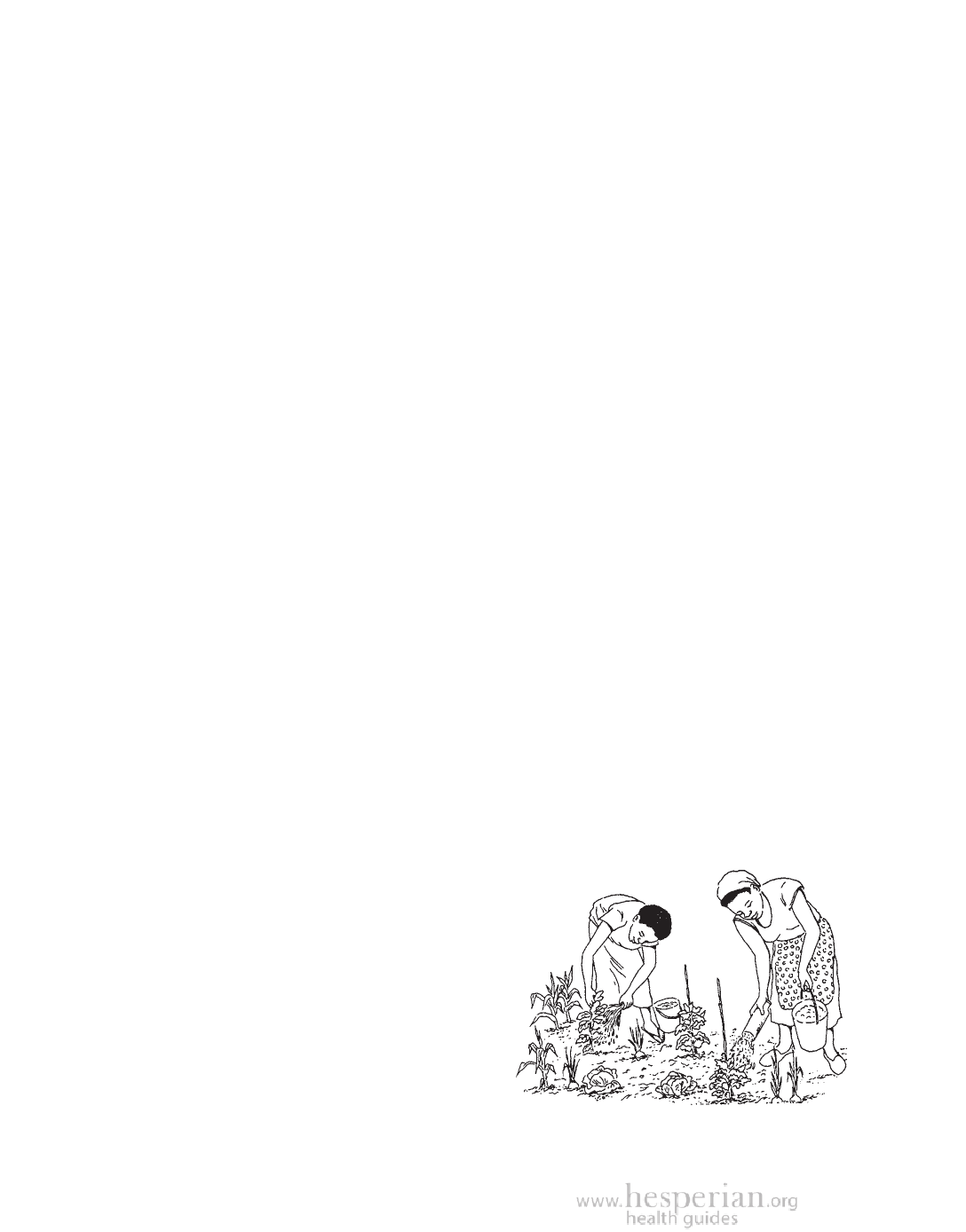
296 Sustainable Farming
Managing Pests and Plant Diseases
Pests, plant diseases, and weeds can be serious threats to crops. Chemical
companies say the only solution is to spray pesticides regularly. But chemicals
may cause more problems than they solve (see Chapter 14). Sustainable farming
works with nature to keep crops, pests, diseases, weeds, and soil life in balance.
This is called natural pest management or integrated pest management (IPM).
Natural pest management prevents problems with pests and plant diseases,
and keeps harmful chemicals out of our bodies and environment. It also avoids
problems of chemical dependence and pesticide resistance (see page 273).
(For some immediate methods to resolve pest problems, see pages 298 and 299.)
Even if you are willing to use pesticides, it is still important to know if
pests are harming your crops, how much damage is being done, and whether
creatures in the fields are already controlling the pest. Then you can decide if
and when to use chemicals, and what kinds to use.
The best way to control both pests and diseases is to keep plants healthy.
• Build healthy soil. Healthy soil provides a home to friendly insects and helps
prevent many plant diseases.
• Plant resistant varieties. Ask farmers or extension agents about seeds to
make sure the ones you choose are resistant to common pests and diseases.
• Space plants correctly. Planting crops too close together limits the sunshine
and air that reaches the leaves, and allows diseases to thrive. But planting
crops farther apart leaves room for weeds, dries the soil, and may reduce
the harvest. Experiment to see what spacing works best for each crop.
• Plant at the right times. Pests and diseases often respond to the weather,
such as the first rains or the first warm day. Watching how each crop
grows and talking with other farmers about these patterns can help you
decide the best time to plant. Planting earlier than usual can make sure
crops are big enough to resist pests or diseases that come at a certain
time. Planting later can cause most of the pests or diseases to die out for
lack of food.
• Plant a variety of crops and change crop patterns.
Large areas with only 1 kind of plant attract
pests who like that plant (see page 300).
• Water from below. Watering from above
can cause diseases that live in soil to
splash onto plants. And wet leaves and
stems are good places for diseases to
grow. Using drip irrigation (see page
294) or flood irrigation can keep plant
leaves and stems healthy.
A Community Guide to Environmental Health 2012